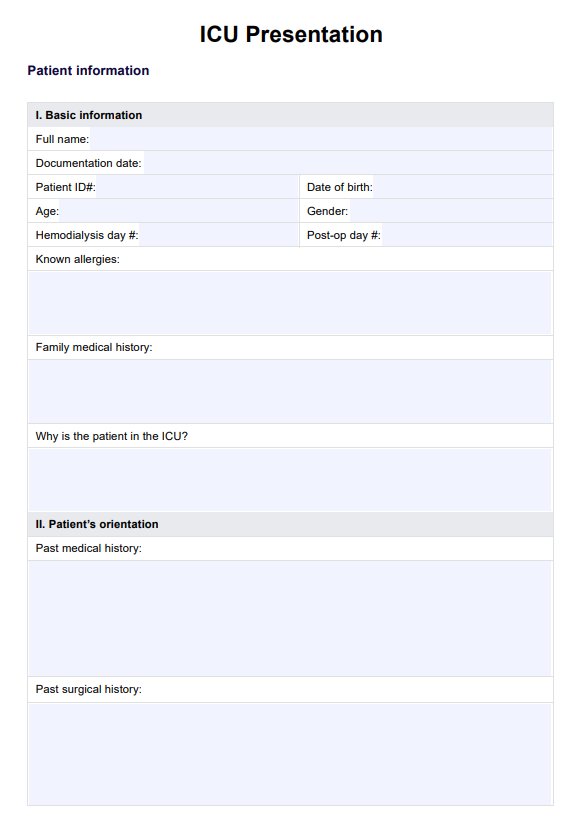The systems presented in this ICU presentation template represent an exhaustive list based on the template produced by the University of Florida. As such, not every system will necessarily be covered in ICU presentations. Systems should only be reviewed if relevant updates or events are to be shared with the rest of the patient’s care team.

ICU Presentation
Standardize your ICU patient presentations, and ensure you present all pertinent information with our structured ICU Presentation Template.
ICU Presentation Template
Commonly asked questions
This may vary from hospital to hospital, but typically, patients are presented by junior doctors (physicians), nurses, or more senior medical or nursing students.
No! This template is packed with ideas of what might be relevant to present, but everything should not be presented—unless you want to talk for a very long time. For the sake of brevity, it’s important to prioritize which results to present and which are normal and don’t need to be focused on during rounding.
EHR and practice management software
Get started for free
*No credit card required
Free
$0/usd
Unlimited clients
Telehealth
1GB of storage
Client portal text
Automated billing and online payments











